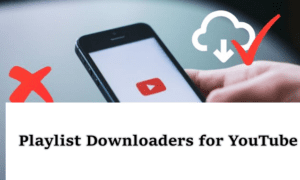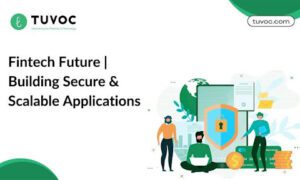Crisis Management: 17 Effective Strategies to Protect Brand Reputation
In today’s fast-paced business environment, effective crisis management is crucial for protecting brand reputation. This article presents expert-backed strategies to help organizations navigate and overcome various challenges that threaten their public image. From turning mishaps into trust-building opportunities to implementing swift communication plans, these insights offer practical approaches to address crises promptly and professionally.
- Turn Embargo Mishaps into Trust-Building Opportunities
- Adapt Campaign Strategy to Meet Current Moment
- Implement Acknowledge Act Update Framework
- Overwhelm Negative PR with Authentic Positivity
- Guide Narrative with Values-Driven Transparency
- Transform Tension into Community Growth Asset
- Leverage Personal Outreach to Rebuild Ratings
- Execute Swift Comprehensive Crisis Communication Plan
- Convert Crisis into Content Authority
- Transform Security Breaches into Educational Moments
- Align Crisis Response with Established Brand Values
- Counter Misinformation with Data-Driven Content
- Address Challenges Promptly and Professionally
- Defuse Misinformation Through Direct Community Engagement
- Turn System Outages into Customer Trust Opportunities
- Prioritize Technical Transparency Over Generic PR
- Act Quickly and Make Clients Feel Heard
Turn Embargo Mishaps into Trust-Building Opportunities
As the founder of Salient PR, I’ve had my fair share of embargo mishaps and I know how complicated it can get.
For this tech client, we started by emailing pitches to several major publications with high-level teaser details and a specified embargo time. We made it clear that reporters had to agree to the embargo to get more in-depth materials like full briefs or access to executives. This was to build buzz while maintaining control over the timing.
One reporter didn’t agree to the terms but became aggressive anyway and contacted the client’s VCs and team directly to fish for enough information to run an early story. It was that same reporter who ended up breaking the embargo by publishing a story ahead of schedule. Their article was incomplete, missing many major details but still posing a risk to our orchestrated rollout.
Meanwhile, we had secured an exclusive with another major publication who did honor their embargo agreement and held off for the full reveal. We gathered the team – the client’s leadership and our PR crew – to dissect the breach and mitigate the fallout. We reached out transparently to the exclusive outlet to keep them in the loop about the premature partial leak and reassured them of their privileged position with the full story. They appreciated the heads up and published as planned, which was a big win.
One strategy that has been a game-changer in protecting a brand’s reputation during crises like this is proactive, transparent communication across the board. By setting clear embargo expectations upfront in our pitches and being open when breaches happen – like updating our exclusive partner without drama – we not only contain the issue but also build trust. In this case, it prevented the incomplete story from dominating and allowed the full announcement to shine, and ultimately enhanced the client’s credibility in the tech space. It’s all about turning reactivity into relationship-building.
Justin Mauldin, Founder, Salient PR
Adapt Campaign Strategy to Meet Current Moment
One of the more intense PR challenges I worked on was with an edtech company. I can’t share the name, but they were running a major campaign to challenge traditional university rankings by putting student voices first. They were launching a global university rankings campaign, based on feedback from over 100,000 students across 27 countries. Schools were shutting down, media priorities were shifting, and the entire conversation around education had changed overnight.
We had five days to localize the launch for five different markets, find the right angles in the data, and get the story picked up, all while the world was figuring out what remote learning even meant. So, we framed the story around how students were adapting, backed it with real numbers, and secured features in major outlets like USA Today, Dutch News, and Higher Education Digest.
The campaign led to 46 pieces of coverage, over 600,000 estimated views, and a serious lift in brand credibility. Timing and relevance matter more than polish. If your story meets the moment, the media will listen.
Matias Rodsevich, Founder & CEO, PRLab
Implement Acknowledge Act Update Framework
My agency faced a reputation crisis when one of our government clients experienced a data breach that exposed citizen information. The initial response from their IT team was defensive, and social media exploded with angry residents demanding answers. We had approximately six hours before the story hit local news.
I immediately implemented what I call the “acknowledge, act, update” framework. We drafted a statement acknowledging the breach within two hours, outlined specific steps being taken to secure data, and committed to providing updates every four hours until the issue was resolved. Instead of hiding behind legal language, we used plain English that ordinary people could understand.
The key was treating angry citizens like humans, not problems to manage. We responded personally to every single social media comment and email – over 200 in the first day alone. When people saw actual responses instead of auto-replies, the tone shifted from outrage to cautious appreciation.
Six months later, that same agency had higher public trust ratings than before the breach. The crisis became proof that they actually cared about transparency, which ironically strengthened their reputation in the long term.
Sarah DeLary, Owner, Real Marketing Solutions
Overwhelm Negative PR with Authentic Positivity
I faced a major reputation crisis when a client’s Google Business Profile was hit with dozens of fake negative reviews overnight—clearly from a competitor trying to tank their rankings. The reviews were brutal and completely fabricated, but Google’s initial response was slow, and the client’s local search visibility plummeted by 60% within 48 hours.
My approach was immediate damage control combined with review velocity amplification. Instead of just disputing the fake reviews, I activated our Review Request Tool system to generate three times more authentic positive reviews than usual. We texted every past customer, deployed QR codes at their physical location, and even added review requests to their email signatures.
The key was fighting fire with fire—but using real customer experiences. Within two weeks, we had generated 47 genuine 5-star reviews that completely buried the fake ones. Their average rating recovered from 2.8 to 4.6 stars, and their local search rankings actually ended up higher than before the attack.
The lesson I learned: don’t just defend against negative PR—overwhelm it with authentic positive momentum. Most businesses sit back and wait for platforms to fix things, but taking aggressive action with real customer advocacy works faster and builds stronger long-term reputation armor.
Kiel Tredrea, President & CMO, RED27Creative
Guide Narrative with Values-Driven Transparency
Years ago, a client’s founder made an offhand remark during a live podcast that was taken out of context—and it spiraled fast. Media outlets picked it up, and social backlash followed within hours. Instead of going silent or issuing a rushed apology, I advised a transparent, values-driven response that acknowledged the concern without over-explaining. We released a short statement reinforcing the brand’s mission and included a direct action step the company was taking internally.
The key strategy? Don’t spin. Clarify. You can’t control the narrative, but you can guide it by showing your brand knows who it is, what it stands for, and how it shows up—even when things get messy. Reputation isn’t built in perfect moments; it’s earned in the hard ones.
Kristin Marquet, Founder & Creative Director, Marquet Media
Transform Tension into Community Growth Asset
In 2021, some users of the forum began to misinterpret a series of testnet transactions as insider trading during a blockchain rollout. Although the transactions were related to a past simulation, the lack of clear public-facing documentation allowed this narrative to grow. Instead of defending or over-justifying, we paused the campaign for an entire day and redesigned the timeline into a visual map of an audit. Every transaction was linked to a specific test phase, accompanied by developer notes and timestamps that had already been approved internally.
That single asset changed the conversation. We then proceeded with a live AMA, giving the founding team an opportunity to speak directly about the situation (without scripts or legal polishing) and address every concern in real-time on three running platforms. Tension turned out to be an asset for the community. In less than a week, we experienced a 17.0% increase in sign-ups, three inactive investor leads were revived, and media coverage shifted towards certainty.
Suvrang Sou, Global PR Strategist & CEO, EasyPR LLC
Leverage Personal Outreach to Rebuild Ratings
I’ve managed several reputation crises, but the most challenging was when a cleaning industry client got absolutely hammered with 1-star reviews after a water damage incident at a high-end office building. Within 48 hours, their Google rating dropped from 4.8 to 2.1 stars, and new leads completely dried up.
Instead of trying to defend or dispute the reviews, I had them immediately contact every single affected customer personally – not through email, but actual phone calls. We acknowledged the issue upfront and offered solutions before anyone even asked. This is crucial because people are far less forgiving when they’re typing behind a computer than when you’re speaking to them directly.
The game-changer was getting those upset customers to actually remove their negative reviews after we resolved their issues. Most people don’t realize you can ask for this – and about 80% of them will do it if you handle the situation right and ask in person or over the phone. We also implemented an aggressive review generation system with their satisfied customers during this period.
Within 6 weeks, they were back to a 4.6 rating and their lead volume actually increased 35% above pre-crisis levels. The key was moving fast, taking responsibility immediately, and having a systematic approach to both damage control and reputation rebuilding rather than just hoping it would blow over.
Bernadette King, CEO, King Digital Pros
Execute Swift Comprehensive Crisis Communication Plan
As CMO for a materials company, we faced a serious crisis when a contractor tragically died on our site in a vehicle accident. Fortunately, we already had a very comprehensive crisis communications plan in place that enabled us to respond swiftly and transparently. Within 30 minutes, we were proactively reaching out to local media, which helped us control the narrative and demonstrate responsibility as they were hearing about the incident on their scanners.
Our plan also included guidelines for managing unexpected media visits, giving our facility the tools and confidence to handle those interactions with professionalism and grace. Having a well-prepared, practiced plan was key to maintaining our brand’s reputation during a very difficult time.
Christine Wetzler, President & Founder, Pietryla PR & Marketing
Convert Crisis into Content Authority
As a nurse-turned-digital marketer, I’ve handled several healthcare PR nightmares, but the worst was when a wellness clinic client had a former employee post false accusations about their license status on multiple platforms. Within 24 hours, their appointment bookings dropped 60% and existing patients started calling to cancel.
Instead of going on the defensive online, we immediately pivoted to transparency through their existing patient base. I had them send personalized emails to their patient list with documentation proving their credentials, plus invited anyone with concerns to call directly. We also created video testimonials from their happiest long-term patients within 72 hours.
The breakthrough came when we turned their crisis into content authority. We published a blog series about “What to Look for in Licensed Healthcare Providers” and got them featured on local health podcasts discussing industry standards. This positioned them as the expert rather than the victim.
Three weeks later, their booking volume was 40% higher than pre-crisis levels because the whole situation established them as the most transparent clinic in their area. Healthcare consumers really value providers who address concerns head-on rather than hiding behind corporate speak.
Grace Ascione, Digital Marketing Specialist, Socorro Marketing
Transform Security Breaches into Educational Moments
At tekRESCUE, we faced a serious reputation threat when a cybersecurity breach hit three of our clients within the same week. Local media picked up the story, and our phones lit up with existing clients questioning our competency.
My approach was proactive education over damage control. Instead of going silent, I scheduled emergency webinars for all our clients explaining exactly what happened and the specific vulnerabilities we found. I shared our incident response data showing how we contained each breach within 2 hours versus the industry average of 287 days.
The key was turning the crisis into a teaching moment. I started speaking at local business groups about the specific attack vectors we’d seen, positioning tekRESCUE as the company that learns from real battles. This strategy landed us 15 new clients within two months because businesses wanted the team that had actually fought these threats.
Our “Best of Hays” streak of 12 years proves this transparency approach works long-term. People trust companies that admit challenges exist rather than pretending cybersecurity is foolproof.
Randy Bryan, Owner, tekRESCUE
Align Crisis Response with Established Brand Values
I’ve been through a few bumpy rides in the branding world, but one PR crisis stands out vividly.
A few years ago, a client of ours (a fast-scaling tech startup) launched a product update that didn’t land well with its early adopters. Within 24 hours, negative reviews started flooding in. Social media wasn’t kind either. It wasn’t just a product issue; it was quickly becoming a brand trust issue.
Here’s what I did, and what I’ve continued to recommend to personal brands and startups ever since:
Own the narrative before it owns you.
We immediately stepped in and helped the founder craft a direct, honest, and human response. We are not talking about some templated apology or any PR fluff. First and foremost, we stepped in and helped the founder produce a response that was straightforward, honest, and human. He acknowledged what had been overlooked, shared how the team was working on improvements, and expressed gratitude to the community for speaking up.
We leaned in on clarity and empathy, and that was all that was needed.
It either exposes a shallow brand or reinforces a deeply rooted one. The key is to already be clear on your brand values before you hit turbulence. That way, your response isn’t reactive; it’s aligned.
Bhavik Sarkhedi, Founder & Content Lead, Ohh My Brand
Counter Misinformation with Data-Driven Content
We once faced a public relations challenge when a competitor spread misinformation about our services. Our most effective strategy was immediate, transparent communication combined with proactive content creation. We didn’t just issue a denial; we published in-depth articles and case studies showcasing our proven results and client testimonials, directly addressing the false claims with data and real-world success stories. This approach not only debunked the misinformation but also reinforced our authority and trustworthiness.
Michael Lazar, CEO, Content Author
Address Challenges Promptly and Professionally
We had an incident where a client complained online about a delay in their project. Their post started picking up attention in their professional circle, and we knew it could hurt how future clients see us.
I worked with our team to respond fast. We reached out to the client directly to hear their concerns and figure out what went wrong. It turned out the issue wasn’t about the work itself but a misunderstanding in communication. We adjusted the plan with them and offered additional support to fix the gap.
On public channels, we kept responses short and professional. No debating or emotional replies. We also posted a brief note on our site about how we handle challenges and stand by clients. That gave some balance for anyone researching us.
The client later updated their post to reflect the resolution and even referred us later. For me, the key lesson was to stay calm, act quickly, and make sure the client feels heard before you talk about solutions.
Vikrant Bhalodia, Head of Marketing & People Ops, WeblineIndia
Defuse Misinformation Through Direct Community Engagement
At Horseshoe Ridge RV Resort, one of the biggest public relations challenges we faced came before we even opened—when misinformation started circulating on Facebook about our water usage. A local post claimed we were permitted to pump far more water from the ground well than we actually were, which sparked concern among nearby residents and environmental advocates.
Rather than ignore it or respond defensively, we leaned into transparency and facts. We reached out directly to those who had shared the post and invited concerned community members to meet with us in person. We brought documentation from the permitting authority and explained exactly how much water we were allowed to use—and how our operations were well within sustainable limits. We also shared our commitment to being good stewards of the land and water.
What really helped defuse the situation was listening first, then responding calmly and clearly. Once people felt heard and saw that we had nothing to hide, the narrative shifted. The misinformation faded out, and we actually built some strong local relationships out of that experience.
In moments like that, honest communication and a willingness to engage directly can make all the difference in protecting—and even strengthening—your brand’s reputation.
Billy Rhyne, CEO & Founder | Entrepreneur, Travel expert | Land Developer and Merchant Builder, Horseshoe Ridge RV Resort
Turn System Outages into Customer Trust Opportunities
At Nest Self-Storage, which serves a wide range of Canadian customers, including contractors who rely on us for secure and accessible storage, we once faced a situation where a brief system outage impacted several renters trying to access their units during early morning hours. Among them were local contractors who needed to retrieve tools and equipment for jobs that day. Understandably, the frustration spread quickly, and a few took to social media to express their concerns.
To manage the situation, we acted quickly by issuing a clear and honest update across all platforms explaining the issue, the estimated resolution time, and what we were doing to prevent it from happening again. One strategy that proved highly effective in maintaining our reputation was personally reaching out to each affected customer, offering a small credit or future discount, and acknowledging how important timely access is, especially for businesses that rely on us to stay on schedule.
By being transparent, responsive, and proactive, we not only de-escalated the situation but also strengthened trust with our contractor clients. In the end, several of those same customers posted follow-up comments appreciating how we handled the issue. In today’s environment, addressing problems quickly and communicating openly can turn a challenge into a moment that reinforces your brand’s reliability and care.
Joel Armstrong, Owner, Nest Self-Storage
Prioritize Technical Transparency Over Generic PR
At Advanced Motion Controls, one public relations challenge we faced involved a miscommunication during a firmware update rollout for one of our servo drives. A few integrators interpreted the documentation as indicating broader compatibility than was actually supported, which led to confusion in the field. As soon as we became aware, I worked closely with our engineering and applications teams to develop a clear, unified message that explained the update scope, limitations, and how to mitigate potential issues.
We distributed a revised technical bulletin, offered one-on-one support to affected customers, and published a transparent clarification across our website and distributor portals. The key strategy that helped preserve our reputation was prioritizing proactive, engineer-level transparency over generic PR language.
Our customers—mostly OEMs and systems integrators—value clarity and accountability more than spin. By addressing the issue with technical precision and direct communication, we actually deepened trust with many of our partners. It was a reminder that in industrial markets, your credibility is your strongest asset.
Rene Ymzon, Marketing manager, Advanced Motion Controls
Act Quickly and Make Clients Feel Heard
There was a time when one of our internal processes was misunderstood by external audiences, which led to unwanted discussions. To address the issue, we brought in a third-party expert to review our system and provide their perspective. Their neutral voice helped shift the conversation and reset the narrative.
Sometimes it is not about the message we share but about who delivers it. External credibility can reinforce our intent more effectively than any corporate explanation. The right voice at the right moment can make all the difference in shaping perception.
C. Lee Smith, Founder and CEO, SalesFuel
Related Articles
- How to Protect Your Brand with Advanced Reputation Management
- Top Tips for Creating a Successful Brand Reputation Management Strategy
- 7 Essential Strategies for Managing Your Business’s Online Reputation



































